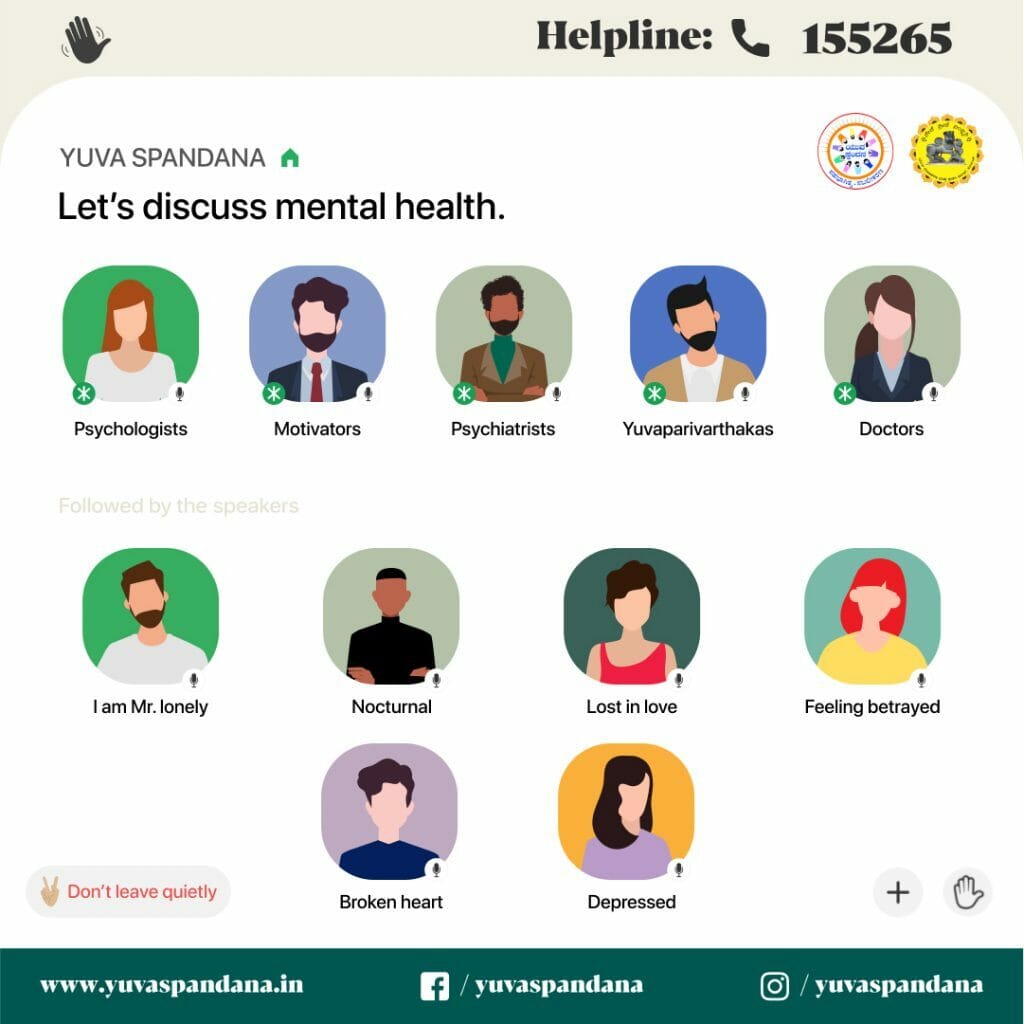Youngsters living in paying guest (PG) accommodations in Bengaluru suffer from a high incidence of mental and substance use disorders, according to a study by the National Institute of Mental Health and Neurosciences (NIMHANS).
The study was conducted across 25 PG accommodations in the eight BBMP zones of the city, among 315 individuals between the ages of 18 and 39. Around 90% of the respondents were between 18 and 29 years. The participants included both students and working professionals in an almost equal ratio.
Two thirds of the respondents were previously living in urban settings (cities and small towns) in different parts of the country, before they migrated to the city. The study, however, assessed only the prevalence of mental and substance use disorders among PG residents and does not go in-depth into the reasons for its occurrence.
The three aspects of mental health disorders
Dr Aravind BA, Additional Professor, Department of Epidemiology at NIMHANS and a supervisor of the study, explains that mental disorders fall under three broad categories: common mental disorder, severe mental disorder, and substance use disorder. Common mental disorder includes depression and anxiety while severe mental disorder includes schizophrenia, bipolar disorder, and others. Substance use disorder arises from the abuse of alcohol, tobacco, and other substances.
The study focused on common mental disorders and substance use disorders and found that 10.2% had Major Depressive Episodes (MDE) and 13.9% had General Anxiety Disorders (GAD).
The scope of the study did not include the identification of the factors causing the mental health disorders. However, the team hypothises that the age group of the individuals could be a primary factor for the disorders.
The challenges of youth
“We generally know that youth is a vulnerable population and evidence suggests that many mental health problems have their onset during this phase. The transition from adolescence to youth brings a lot of confusion in young people’s minds, which makes them more vulnerable. So being a young person itself is a factor to be considered,” explains Dr Aravind.
Additionally, the team observed that more than 90% of the individuals who participated in the study were migrants to the city. Majority of the participants said that they had no one to confide in or share an emotional bond with in the city, which makes them more vulnerable to mental disorders.
“Parents need to be aware that their wards need a social support system when they move to a new city. They should continue providing emotional support and stay in touch with their children regularly,” suggests Dr Aravind to reduce the prevalence of mental health disorders among migrants.
Read more : NIMHANS mental health santhe: A fair to educate, enable and empower

Pic: Dr Aravind BA
Self-care training as a solution
Dr Aravind suggests that alongside sensitisation programmes, life skills and self-care training should be conducted, especially for those suffering from mental disorders.
Self-care training includes enabling individuals to manage their problems and any distress that may arise while conducting their day-to-day activities. Educating them when they should reach out for professional help and support is also part of self-care. In addition to providing such training to the youth, Dr Aravind says it is important to train the teachers and management of educational institutions to identify any symptoms relating to mental disorders.
“Every educational institution can have a counselling support system open to the students providing them with psychological first aid or mental health first aid and then refer them to experts based on their needs”, says Dr Aravind. A similar approach can be taken at workplaces as well.
Read more : Rs 155 cr already spent on Namma Clinics, but will it improve healthcare for the urban poor?
Initiatives to promote mental health
Although not an offshoot of the aforementioned study, there are several initiatives undertaken at NIMHANS to promote mental health. There are an Occupational Mental Health Programme and a Youth Mental Health Programme, which work together with various workplaces and educational institutions.
As part of these programmes, the department builds capacity by training teachers, NSS volunteers, co-ordinators, among others, in schools and colleges to impart life skills training to their students.
Yuva Spandana is yet another collaborative initiative by The Centre for Public Health, Department of Epidemiology, NIMHANS, and The Department of Youth Empowerment and Sports, Government of Karnataka. The ongoing programme is being successfully conducted across all the districts in Karnataka. The programme includes a team of youth who are trained by NIMHANS, who further create mental health awareness and sensitisation programmes in educational institutions in their respective districts.

Another unique initiative by the department, in collaboration with Biocon Foundation, is the Bangalore Urban Mental Health Initiative (BUHMI). Phase one of this initiative was conducted between 2020 and 2021 in one zone of the city. The team involved had identified a set of skills (self-care skills) that are required to promote and protect one’s mental health.
The programme has also identified various modules, which discusses management of emotions, practice of empathy, accountability, stress management, and others, including psychological first-aid.
Dr Aravind mentions the importance of enabling community based organisations to provide mental health support as they have greater reach, especially in an urban setting.
As a part of enabling such institutions, he suggests that it would be impactful if at least one individual from a PG accommodation, preferably someone from the administrative or management level, were to be trained in the different modules formulated as a part of the Bangalore Urban Mental Health Initiative. This would help the trained personnel to act as an immediate help and provide mental health first aid when the need arises. Phase two of this initiative, which is scheduled to begin in January, will include such trainings.
Government initiatives
The District Mental Health Program (DMHP) is one of the components that come under the National Mental Heath Program. Under this program, each district is assigned with a psychiatrist, clinical psychologist, psychiatric nurse, psychiatric social worker, community nurse, monitoring and evaluation officer, case registry assistant, and ward assistant/orderly.
Their interventions include life skills and counselling in schools and colleges, work stress management in workplaces, suicide prevention services, sensitisation to approach mental health in a better way and act as a linkage among those working in the mental health field.
“The problem with the existing DMHP program in Bengaluru is that the city has a population in crores. There are several hundreds of educational institutions and workplaces in the city. The DMHP team is very small and regularly checking in with these institutions is a challenge. Implementation is the challenge with the current programme in place,” says Dr Aravind.
He adds that to introduce and sustain new programmes, the strength of the DMHP needs to be increased.
Dr Aravind and his team suggest that under the programme, each BBMP zone in the city should be considered as a unit with a functioning team, keeping the population of the city in mind.
[The NIMHANS study is yet to be published]
For more information on NIMHANS, visit their website.